
Best Views of the Golden Gate Bridge
Think you know the beloved span of the Golden Gate? There are still secrets to discover.
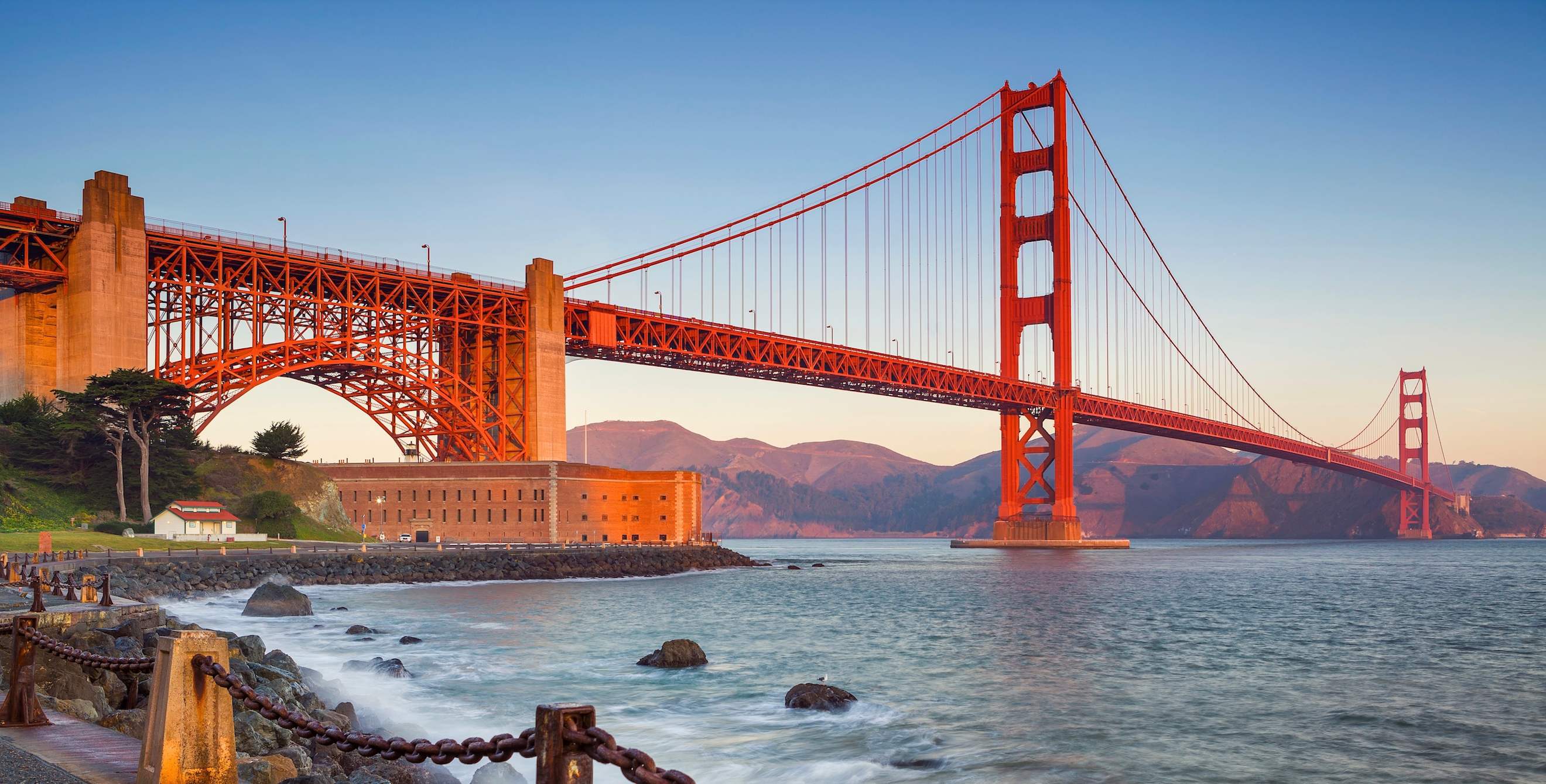
It could so easily have gone so wrong. Early opponents of the Golden Gate Bridge derided Chief Engineer Joseph Strauss’s initial design as an “upside-down rat trap” that would desecrate the natural beauty of San Francisco Bay.
In 1933, with construction poised to begin, some experts warned that no bridge could withstand the forbidding depths and currents of the narrow strait. Foes filed some 2,300 lawsuits. The Great Depression spooked funders. And even after the bonds had been secured, new designers were hired, and a graceful art deco span had started to take shape, the U.S. Navy urged painting the 746-foot towers like giant bumblebees—in black and yellow stripes—for safety reasons.
“The navy thought the stripes would be more visible to ships in a heavy fog, and we get a lot of fog,” says Dennis “Rocky” Dellarocca, now-retired paint superintendent for the bridge. The Army Air Corps preferred red and white stripes.
In the end, consulting architect Irving Morrow held sway, arguing that the orange-red primer already covering the steel would make a lovely—and highly visible—final coat. On May 27, 1937, the vermilion suspension span we know today was officially christened.
To celebrate the power of this enduring landmark—and learn how to appreciate it from all the right angles—check out the best places to visit.
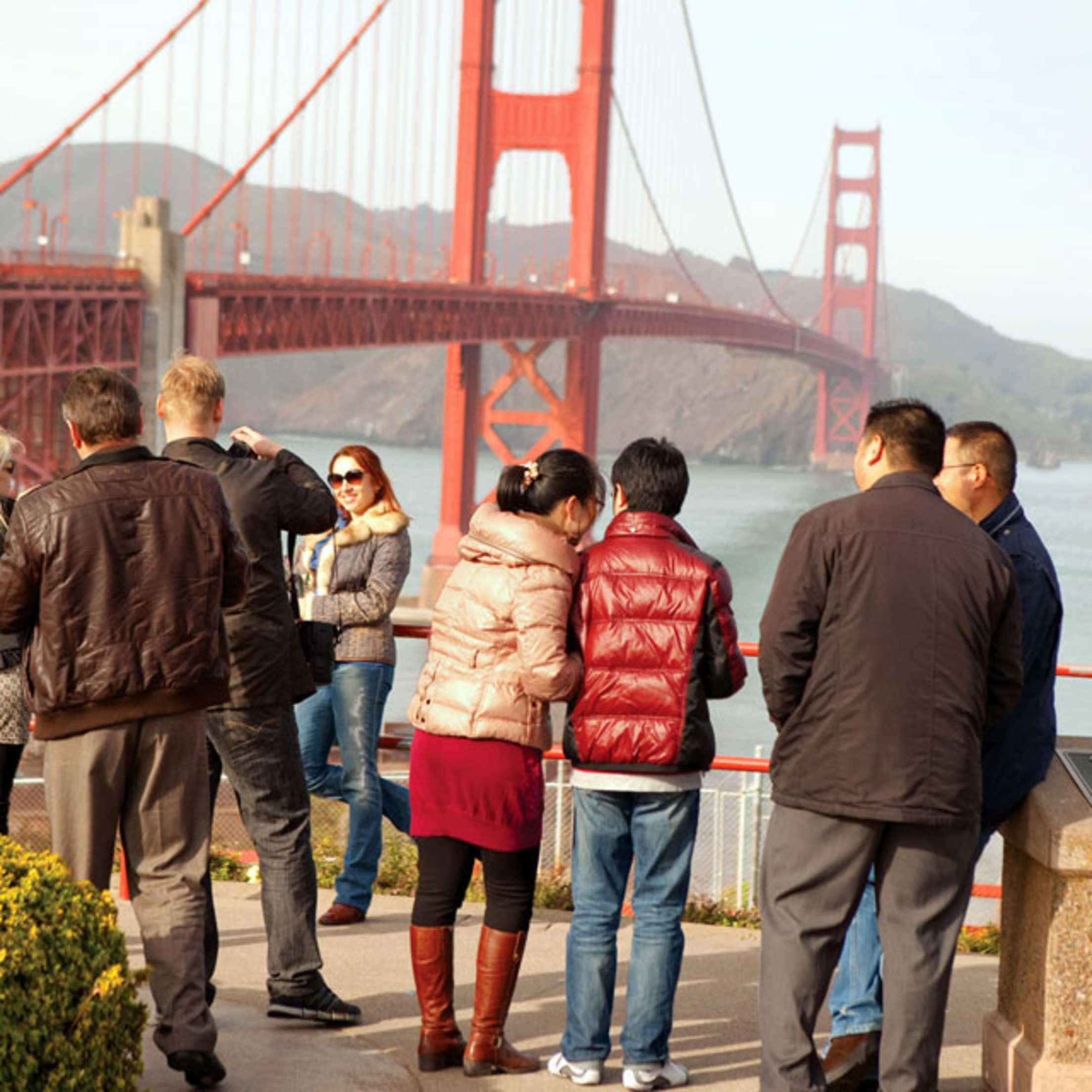
Visitors enjoy the view of the Golden Gate from Strauss Plaza.
Strauss Plaza
On the south side, visitors from countries all over the world savor stunning views of the bridge set against Marin County’s rolling hills. Nearby at the visitor pavilion and Round House, you can check out interpretive exhibits and photographs, and peruse an expanded gift shop with bridge-themed books, puzzles, T-shirts, tote bags, and men’s ties.
The bronze statue in the center of the plaza depicts Joseph Strauss, the bridge’s founding engineer. Though Strauss was a relentless and canny campaigner, another engineer—Chicagoan Charles Ellis—is now believed to have contributed greatly to the final suspension design. Still others (including John Eberson, a theater architect and designer of sumptuous movie palaces) gave the bridge its art deco styling.
“Strauss’s strength was never as a designer,” says Mary Currie, now-retired public affairs director for the bridge. “But he was persuasive and persistent, able to lure the brightest engineers and designers in the business to the project, and get done what many said was impossible.”
A slice of a main cable is on display near the Strauss statue. The cross section, about a yard in diameter, is made up of 27,572 perfectly aligned, individual steel wires, each the thickness of a pencil.
To avoid the parking headaches at the plaza, take a No. 28 Muni bus in San Francisco. Or park anywhere along Crissy Field and walk up the short, stairstep path that starts near the Warming Hut, a popular bayside joint serving coffee and sandwiches.
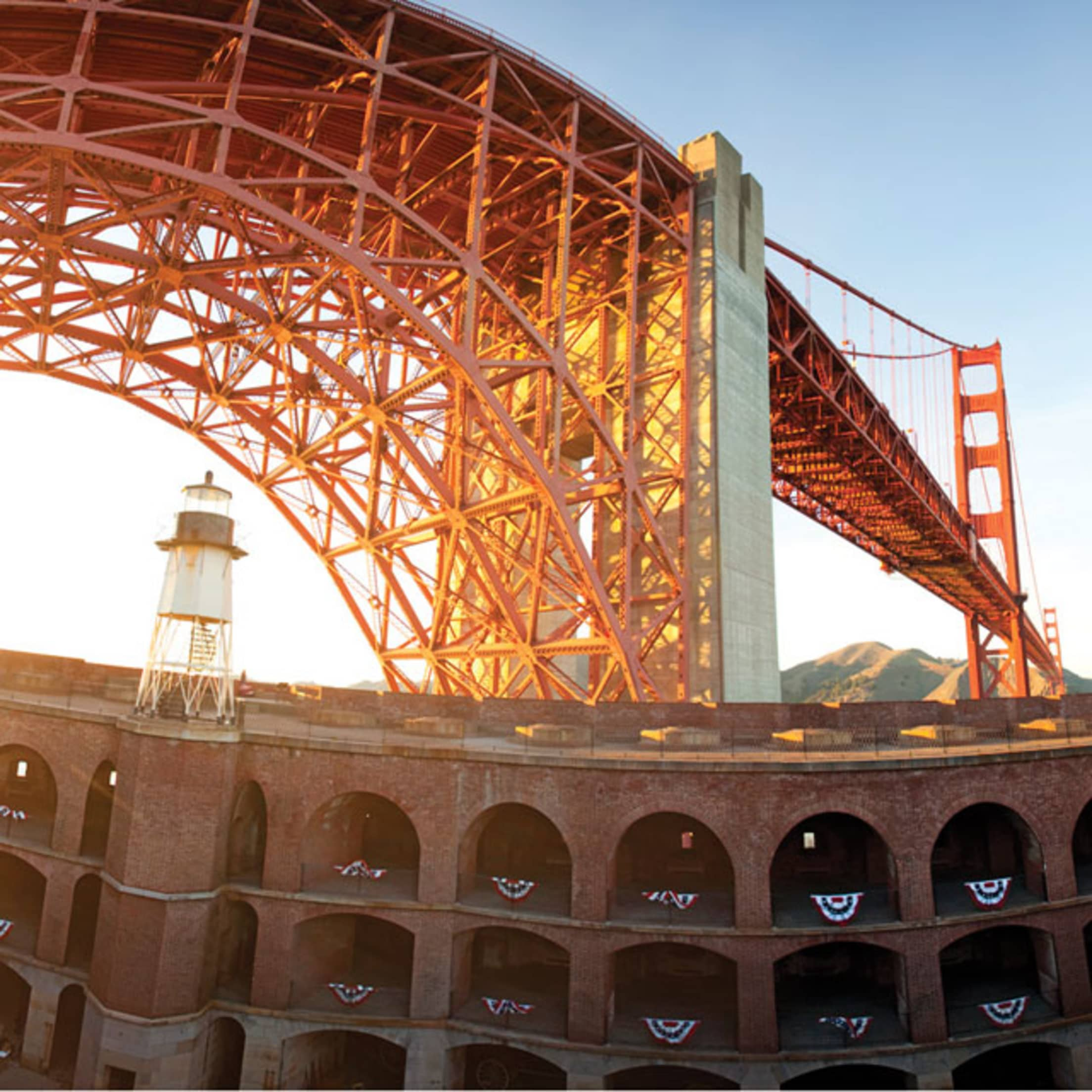
Chief Engineer Joseph Strauss opted to a build an arch over Fort Point instead of squashing it.
Fort Point
Strauss faced a problem. Directly beneath the span on the San Francisco side sat a Civil War–era fort that he loved. The solution? Adding an arch that reached over the brick citadel instead of squashing it.
To make that happen, a large concrete pier was built 1,100 feet offshore amid a tidal torrent. Hard-hat divers working in 100 feet of water, wearing bulky rubber and canvas suits, said they could barely see their hands in the murky swirl as they hurried between tides to lay explosives and level the ocean floor. Their preparations created a base sturdy enough to support the span’s southern foot.
Inside the fort today you can see photos of those diving suits and read news clippings from the period. A video includes interviews with ironworkers. “It was a riveter’s paradise,” the narrator says, alluding to the more than 600,000 rivets in each tower. Climb the steep spiral staircase to the top of the fort to hear the foghorns’ reverberating blasts and admire the riveted orange latticework that supports the road just overhead.
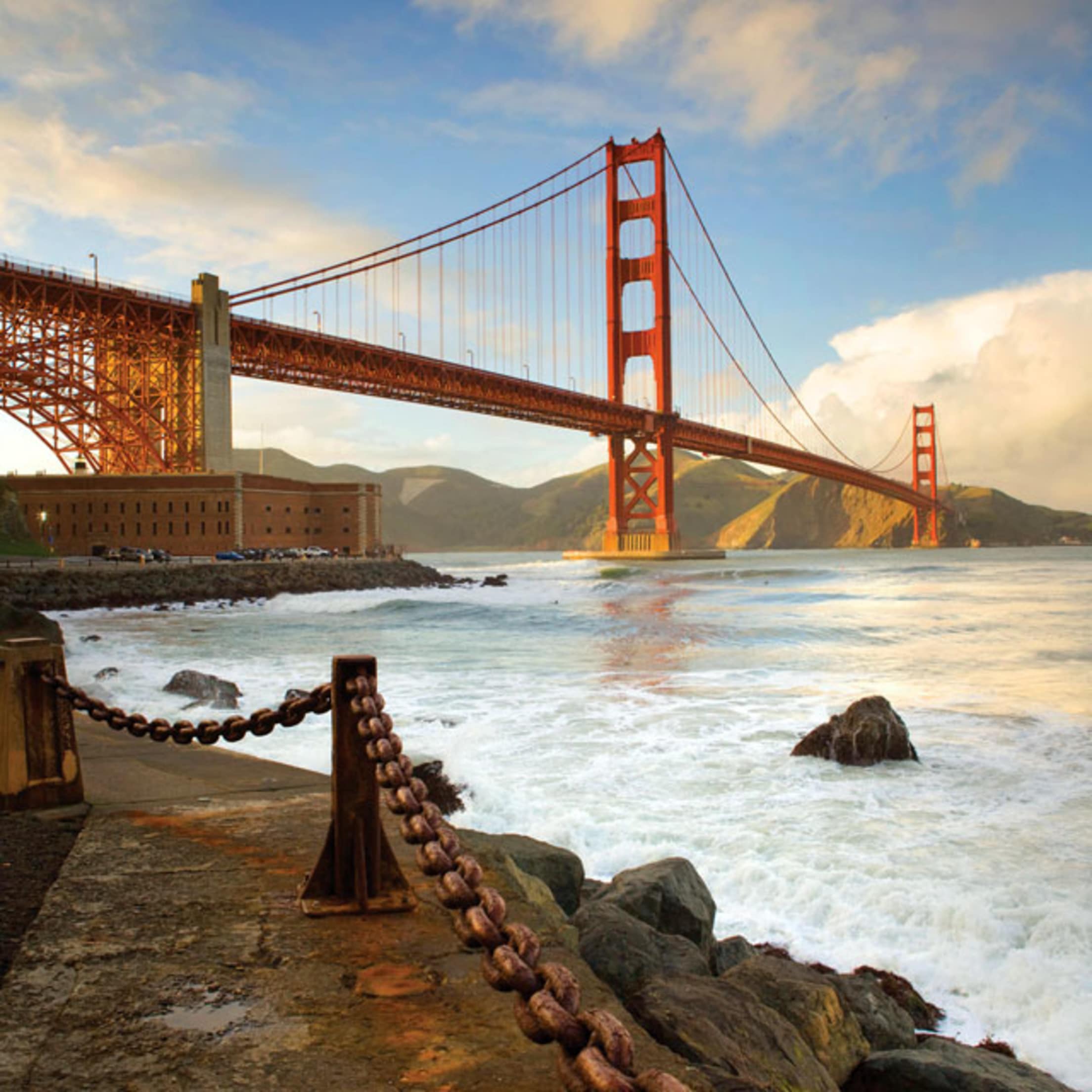
From the southern end, you can see Fort Point and the sweeping span of the Golden Gate Bridge.
The Span
To truly experience the bridge, you need to walk across it,” says Rocky Dellarocca. “It’s in constant motion.” Hear it rumble and feel it bounce in response to changes in weather, temperature, and load. The span was built to withstand a 27-foot side-to-side sway and to move up and down by as much as 16 feet. Ambient temperature alone stretches and shortens the cables, moving the roadway up and down by at least several feet over the course of each day. Seismic retrofitting, still under way, aims to help the bridge survive an 8.3 quake. During the span’s 50th anniversary celebration on May 24, 1987, the arch in the roadway flattened under the weight of 300,000 pedestrians. Fortunately, the bridge held.
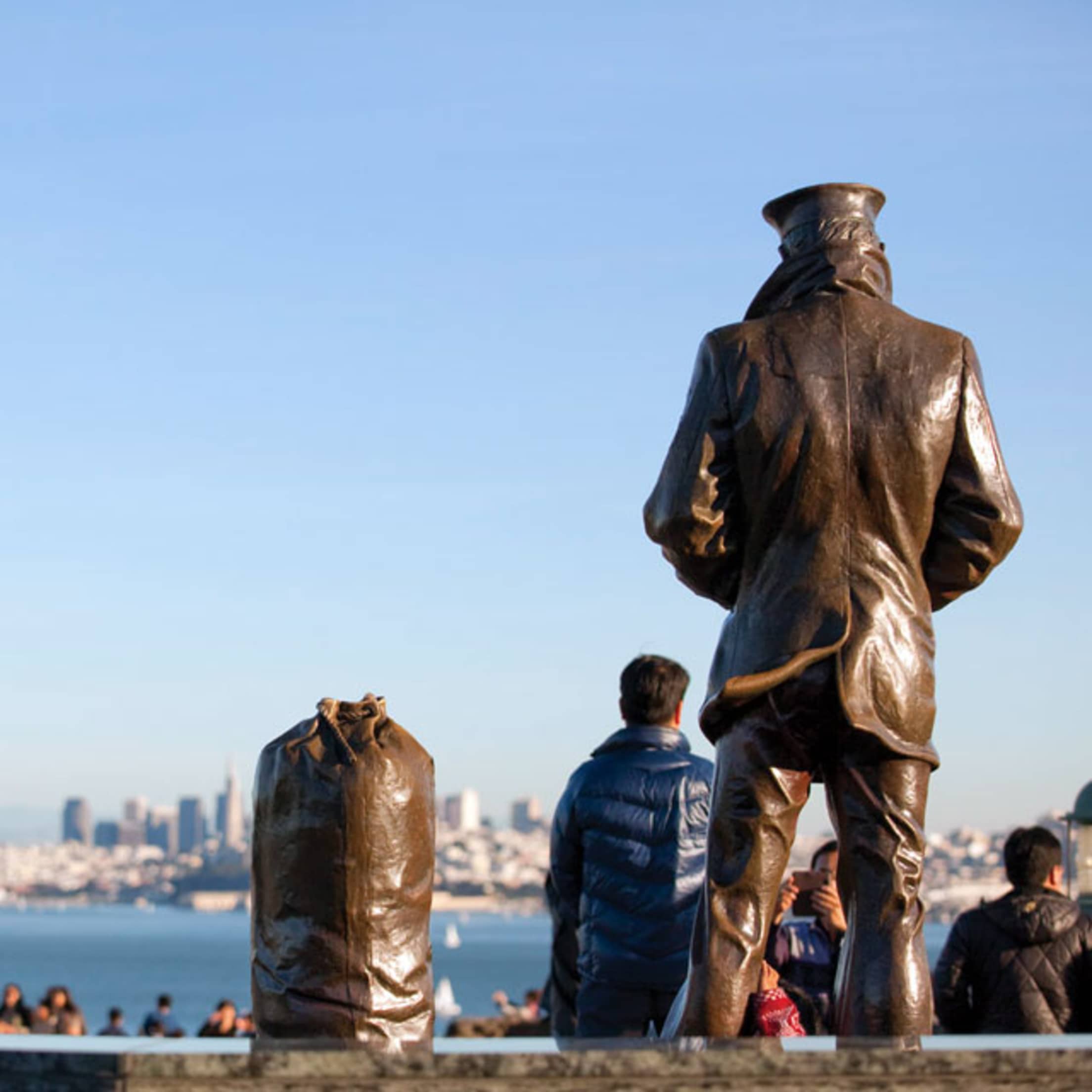
The statue of the Lone Sailor looks south to San Francisco and the bay.
Vista Point
The best reason to stop at the northeast turnout is not to see the bridge or San Francisco’s cityscape across the bay, but to take in the moving Lone Sailor statue. This larger-than-life bronze statue portrays a wistful young seaman standing alongside his duffel bag as he gazes out over San Francisco and the bridge. A small plaque describes the monument: dedicated to the ordinary sailors and marines who sailed from this place and did their duty.
The statue is a copy of one at the U.S. Navy Memorial in Washington, D.C., but it seems equally fitting on this bluff. During World War II alone, more than 1.5 million men and women shipped out to sea through the Golden Gate. And when they returned, the Golden Gate Bridge was their first sign of home.
Spun in economic hard times out of stubborn faith and hard work, the Golden Gate Bridge is still a gorgeous sight.
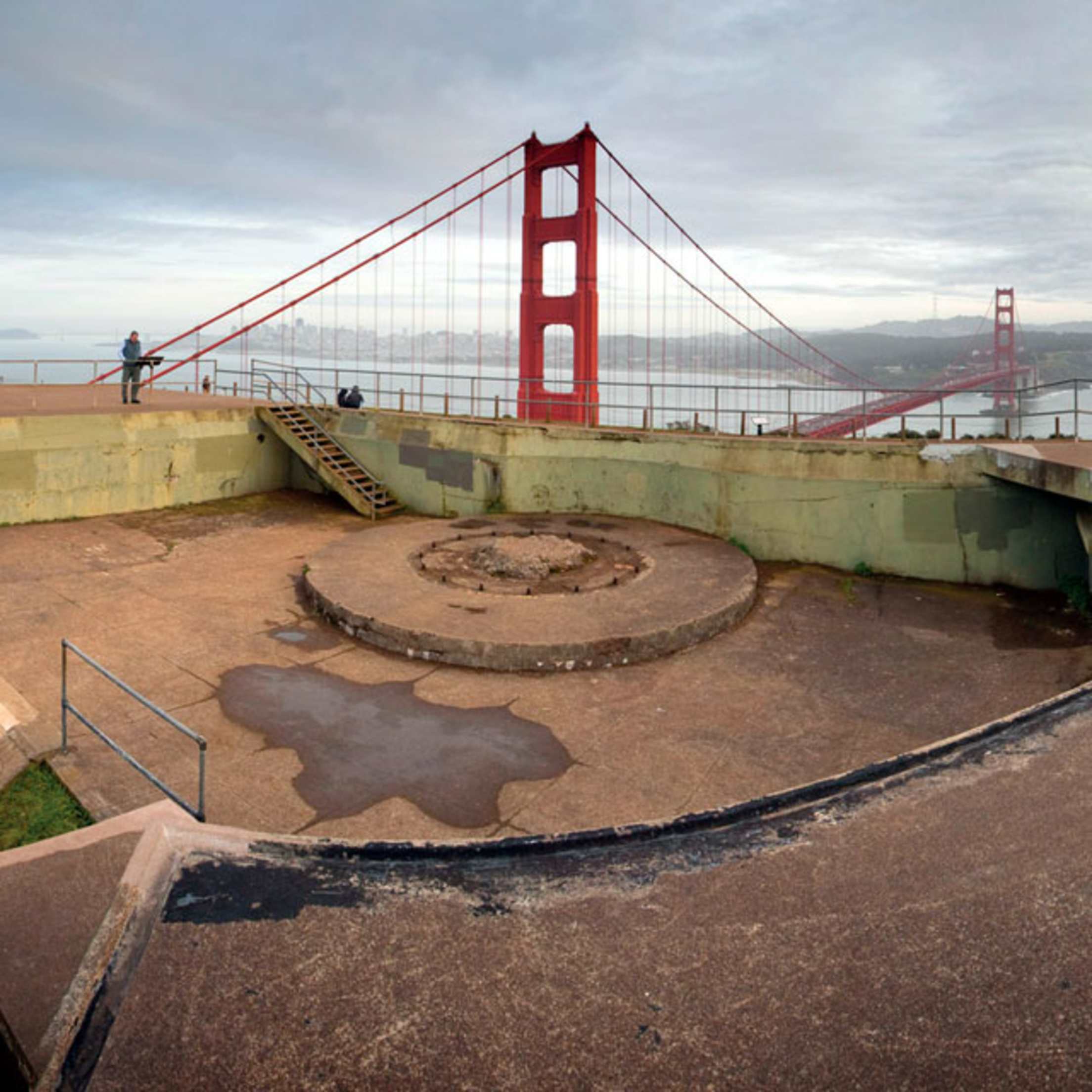
Battery Spencer is an army site in the Marin Headlands that puts you at eye level with the top of the bridge's towers.
Battery Spencer
To get a bridge painter’s perspective, head to Battery Spencer, a 19th-century army site perched high in the Marin Headlands, where you’ll find yourself nearly eye level with the top of the towers. On a clear day, Berkeley, the East Bay hills, Alcatraz, Angel Island, and San Francisco float at the horizon in a visual feast. But foggy days here can be even more dramatic, as the bridge towers vanish and reemerge like twin masts of a ghost ship.
For a sea-level view, seek refuge at the bottom of the fire road just west of the Battery Spencer turnout. The broad, mile-long dirt road leads to Kirby Cove, a cypress- and pine-fringed campground and picnic area with barbecue pits, a quiet sandy beach, and a front-row seat for the parade of container ships, sailboats, ferries, and tugs that surge through the gate.
Fort Baker
Cavallo Point, the rocky promontory jutting out from former Fort Baker on the Marin shore, rims a quiet harbor and offers one of the best spots to experience the bridge—and good places to dine.
You can order Drakes Bay oysters at luxurious Cavallo Point Lodge, a burger with smoked mozzarella at Farley Bar, or pizza and a brew with a mesmerizing view at the Presidio Yacht Club.
The beauty of the bridge belies the dangers of building it. The massive north anchorage, visible from Cavallo Point, was the site of the deadliest accident during construction: Ten men died on February 17, 1937, when a five-ton work platform plunged through a safety net that saved 19 men through the course of the project—survivors dubbed themselves members of the Halfway to Hell Club. Safety-conscious Strauss was the first to require construction workers to wear hard hats—adapted by a company that made miners’ helmets.
Get more out of your vacation: Book through AAA Travel for exclusive Member benefits.